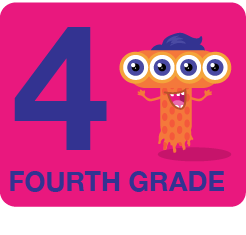Let's dive into the fascinating world of decimal values! The worksheet is packed with exercises that will sharpen your understanding of decimal values. It features fourteen sets of decimal pairs where you'll need to identify and mark the correct symbol out of '<, ''>,' or '=.' Additionally, there are eleven more questions that will challenge you to round off decimal numbers to the nearest decimal place as mentioned.
To solve a decimal comparison problem, you should first ensure that the decimals you are comparing have the same number of decimal places. You can add zeros to the end of the decimal if necessary. Then, start to compare from the left-most digit. The first digit that differs will determine which number is bigger. If they are the same up to the last digit, then they are equal.
To round decimal numbers, first, you must identify the place value to which you want to round. Looking at the digit to the right of this place value will determine if you will round up or down. If this digit is 5 or greater, you round up the identified place value (add 1 to the digit). If it's less than 5, you keep the digit as it is and remove all digits to the right.
For example, if you are rounding the decimal 1.78 to the nearest tenth, you would look at the 8 (the hundredth place). Since 8 is greater than 5, you would round the 7 (the tenth place) up to 8, resulting in 1.8.
Decimal Practice: Comparing and Rounding Numbers
Additional Educational Resources:
Adding and Subtracting Decimals Large Workbook - (Grade 4)
Multiplying and Dividing Decimals Large Workbook - (Grade 5)
Subtracting Decimals (Grade 4 - Math Assessment)
Decimals (Grade 5 - Math Assessment)
Barn Exterior Perimeter Calculation with Doors, Windows, and Other Details
Calculating the Expenses for a Birthday Celebration
Type Of Quadrilaterals
GCF by Prime Factorization
Decimal Practice: Comparing and Rounding Numbers
GRADES:


Additional Educational Resources:
Adding and Subtracting Decimals Large Workbook - (Grade 4)
Multiplying and Dividing Decimals Large Workbook - (Grade 5)
Subtracting Decimals (Grade 4 - Math Assessment)
Decimals (Grade 5 - Math Assessment)
Barn Exterior Perimeter Calculation with Doors, Windows, and Other Details
Calculating the Expenses for a Birthday Celebration
Type Of Quadrilaterals
GCF by Prime Factorization

